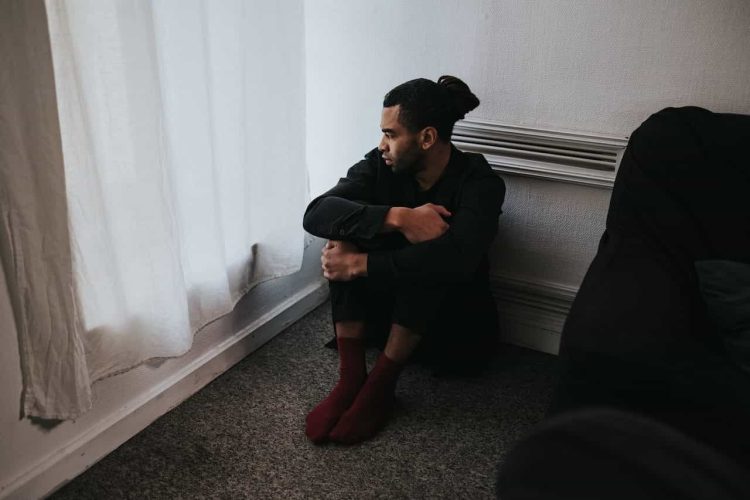Who is at risk of developing agoraphobia disorder? Almost anyone, including children, can develop it, but it usually occurs during adolescence or early adulthood, before reaching the age of 35.
The term is derived from the Greek words ‘agora‘, meaning ‘place of assembly’, ‘open space’, or ‘marketplace’, and ‘phobia‘, meaning ‘fear’. Agoraphobia can also be caused by external influences, such as environmental stressors and learning experiences .
Those who are nervous by nature may be more likely to have agoraphobia. A traumatic event in life (such as physical or emotional abuse, or the death of a loved one) can also cause someone to develop agoraphobia.
Alcohol consumption and smoking have also been linked to the development of agoraphobia, although the link between smoking and anxiety and panic disorder remains unclear. Some theories include nicotine addiction and the effects of smoking on a person’s breathing as possible causes.
Why should it be taken seriously?
Aside from the obvious discomfort of never being able to get out of the house, agoraphobia can lead to clinical depression and substance abuse. The more one suffers, the more likely one is to develop additional mental disorders or health problems. It should therefore be treated as soon as the symptoms begin to appear.
Symptoms of agoraphobia
The physical symptoms of a panic attack may include:
- Fast heart rate.
- Breathing difficulty.
- Feeling dizzy and nauseous.
- Feeling shaky or numb.
- Sweating.
- Hot flushes or, conversely, chills.
- Occurrence of stomach disorders and diarrhea.
Someone with agoraphobia will show fear and anxiety when confronted with leaving home alone, using public transportation, waiting in line, or being in a crowd. They may also be afraid of open spaces, such as parking lots or shopping malls. This is because they are afraid that they will not be able to escape or seek help if they have a panic attack.
While some phobias are inactive, agoraphobia is almost always triggered by exposure to this condition. In other words, to avoid fear, people avoid the situation: they do not take public transport; they do not go to the mall; they stop going to work; many simply stay home, looking for all the possible options that will allow them to get what they need, without having to leave home to get it.
As with most phobias, however, the fear of the situation is infinitely greater than the dangers of the real situation itself. While some are brave enough to leave home despite their fears, they can often feel very anxious doing other simple tasks, such as going to work, sitting on the move, or going shopping.
Treatment options
Agoraphobia can bring someone to a point where they can no longer find the strength to leave home. Without treatment, some people stay indoors for years, and their quality of life is severely affected. They stop seeing friends and relatives. They drop out of school and quit their job. They send someone else to do their shopping.
In the most extreme cases, they refrain from engaging in routine activities, such as going to the grocery store or picking up trash. As a result, they often depend on others for daily help and stop living the life they had before agoraphobia.
Agoraphobia and panic disorders are best resolved with treatment. Treatments for conditions such as these include cognitive behavioral therapy (CBT) and medication.
Face your fears
The less you deal with your fears, the more they build up. Sometimes, the best way to overcome your fears or anxieties is to deal with them head-on. If you are afraid to take the bus, take a short bus ride. If being in a line at the grocery store worries you, take a friend with you and stand in line. Regulate your breathing while dealing with your fears.
However, the best way to overcome your phobia is to seek treatment as soon as possible. Like most mental illnesses and disorders, the sooner you get help, the more effective the treatment will be. Remember, timely help can prevent your symptoms from getting worse!
Cognitive Behavioral Therapy
Cognitive behavioral therapy is one of the most effective treatments for anxiety disorders. It works by teaching you the specific skills needed to deal with stress, deal with your fears, and gradually return to a normal life. The symptoms will gradually improve over time.
Cognitive behavioral therapy can help you recognize the stimuli and symptoms of a panic attack and what makes them worse. It can also provide you with different thought patterns to help you challenge your fears and differentiate between logical and irrational thoughts.
With the help of a therapist, you will be able to reduce the effects of stress. You will learn how to stay present in the situation, no matter how scared you may feel. The therapist will equip you with coping mechanisms to manage your symptoms.
Treating agoraphobia can be difficult if you need to find the courage to leave home to meet with a counselor. This seems almost impossible, because the reason for seeking help is precisely your inability to leave your home. In this case, you may want to consider seeing an online therapist, which may be more helpful than meeting a therapist in person.

